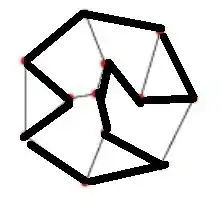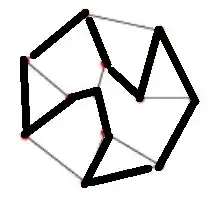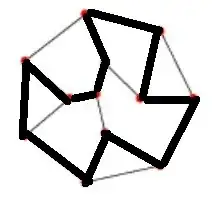I looked at the symmetric difference of hamilton cycle (HC) in cubic planar graphs and found that, together with the empty graph, they build a subgroup of the abelian group $\Omega$ of symmetric differences of cycles. This is easily illustrated by the HCs of Frucht graph:
Check yourself that the symmetric difference of any pair gives the third HC! (Also interesting to note that the set of cuts of pairs builds a $3$-edge coloring of the graph!)
Now the cycle space is spanned by the faces $f_k\in F$ of $G$ and is kind of a power set of faces, since in the total symmetric sum, you turn on/off a certain face. This results in a $F$ dimensional vector space over $\mathbb Z_2$, which has $2^F$ elements, which are the group elements of $\Omega$.
Now I wonder if it is true in general, that the number of HCs plus $1$ divides $2^F$, since the subgroup is normal, even central. As shown in a reference here we will always have three HCs in cubic graphs.
Fine, but this opposes what I read somewhere else (trying to provide a reference) that bicubic graphs always have four HCs. Or don't these four build a single subgroup, but rather a set of subgroups?
What happens in the bicubic case and is it true for cubic ones that they always have $2^m-1$ HCs?
I'm confused, since I found this quote "Every cubic bipartite graph has an even number of Hamilton cycles." from J. Bosak, Hamiltonian lines in cubic graphs,Theory of Graphs, International Symposium, Rome, July 1966 , Gordon & Breach, New York, (1967), 35–46. for example here, contradicting my assumption...



